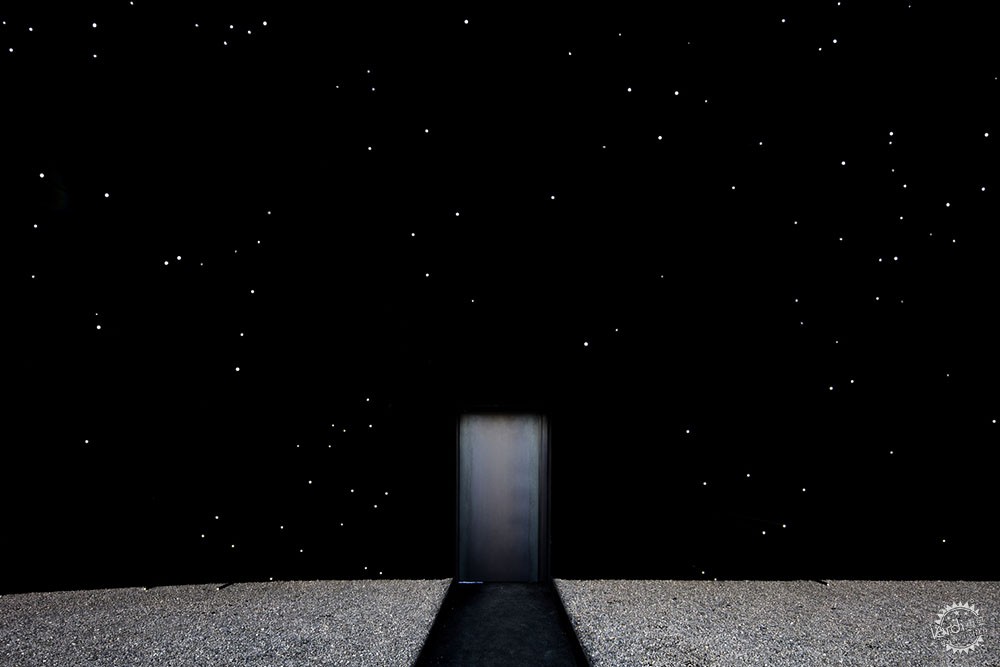
Asif Khan's Vantablack Pavilion at the Pyeongchang Olympics. Image © Luke Hayes
八位建筑师与艺术家的月球生活
Life on the Moon, According to 8 Architects and Artists
由专筑网李韧,邢子编译
SpaceX的创始者Elon Musk宣布,日本亿万富翁Yusaku Maezawa将成为月球的第一位自费旅行者,而这位零售大亨也宣布,此次旅行将会与6至8位艺术家共同进行,这个消息引起了一时轰动。
“亲爱的月亮”项目见证了画家、音乐家、电影导演等人与Maezawa一起,共同实现“那些从未实现过的梦想,那些从未歌唱过的歌谣,畅想从未见识过的未来”。
为了呼应这一项目,美国的《纽约时报》对全球知名建筑师与艺术家进行了采访,他们也畅想了未来的月球生活。采访的完整版可以浏览《纽约时报》的文章,而下文则是对这篇文章内容简明扼要的描述。
这些构想代表了建筑界对于其他星球居住地的浓厚兴趣。近期,NASA通过了AI SpaceFactory对于火星3D打印小屋的构思,同时福斯特建筑事务所也在英国Goodwood节上发表了对于其他星球生命的见解。
Following the announcement by SpaceX founder Elon Musk that Japanese billionaire Yusaku Maezawa would be the first paying customer to visit the Moon, the retail tycoon generated further excitement by declaring he would bring between six and eight artists to accompany him.
The “Dear Moon” project would see a painter, musician, film director, and others, accompany Maezawa in order to “dream dreams that have never been dreamed…to sing songs that have never been sung, to paint that which has never been seen before.”
In response, The New York Times spoke to a group of high-profile names from the world of art and architecture, asking them to speculate on what life on the moon could look like. The full answers can be found via The New York Times article here, with a condensed summary outlined below.
The visions come at a time of heightened interest among the architecture community of the potential for establishing settlements on other planets and moons. Recently, NASA endorsed AI SpaceFactory’s vision for 3D printed huts on Mars, while Foster + Partners showcased their vision for extra-terrestrial habitats at the UK’s Goodwood Festival.
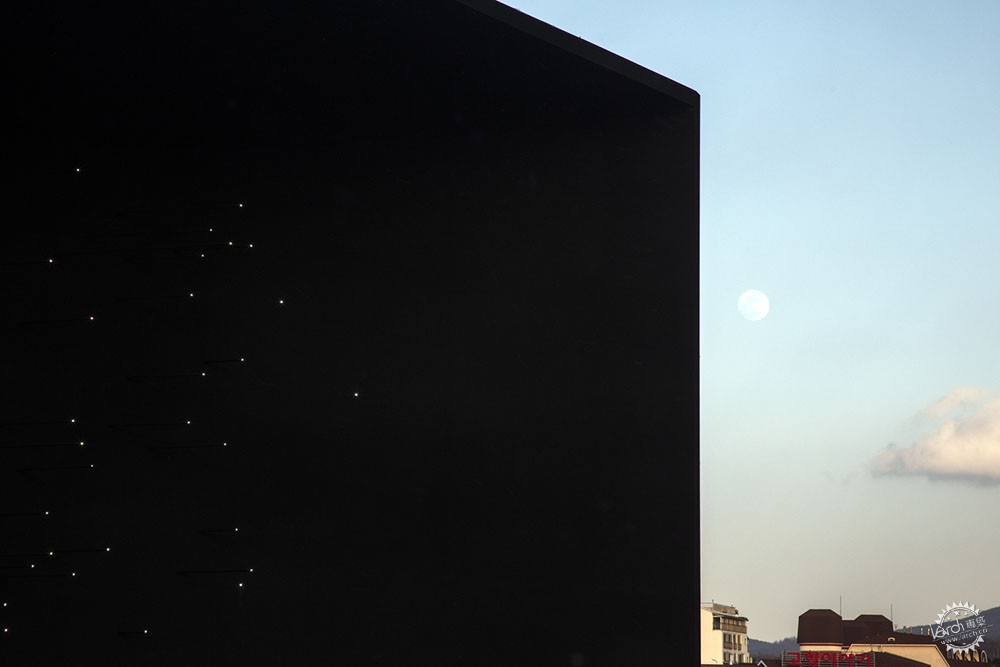
Asif Khan's Vantablack Pavilion at the Pyeongchang Olympics. Image © Luke Hayes
丹尼尔•里伯斯金,建筑师,纽约
信息来自《纽约时报》:我的建议是将月球改造为艺术项目,这是一个球体,我想要把它改造为方形,我们认为最好的策略是将其涂成黑色,这样便不会反射阳光,然后结合曲线,在月球表面画上4个球形帽。我喜欢这种把月球当做艺术的思维方式。
Daniel Libeskind, Architect, New York
From The New York Times: “My proposal is to turn the moon itself into an art project: It’s a sphere and I want to turn it into a perfect square. That’s the dream […]We thought the best way would be to paint sections of it black, so they no longer reflect the sun’s light. To account for the curvature, you’d need to paint four spherical caps on the moon’s surface […] I like the way that it would transform the moon into a work of contemporary art.”
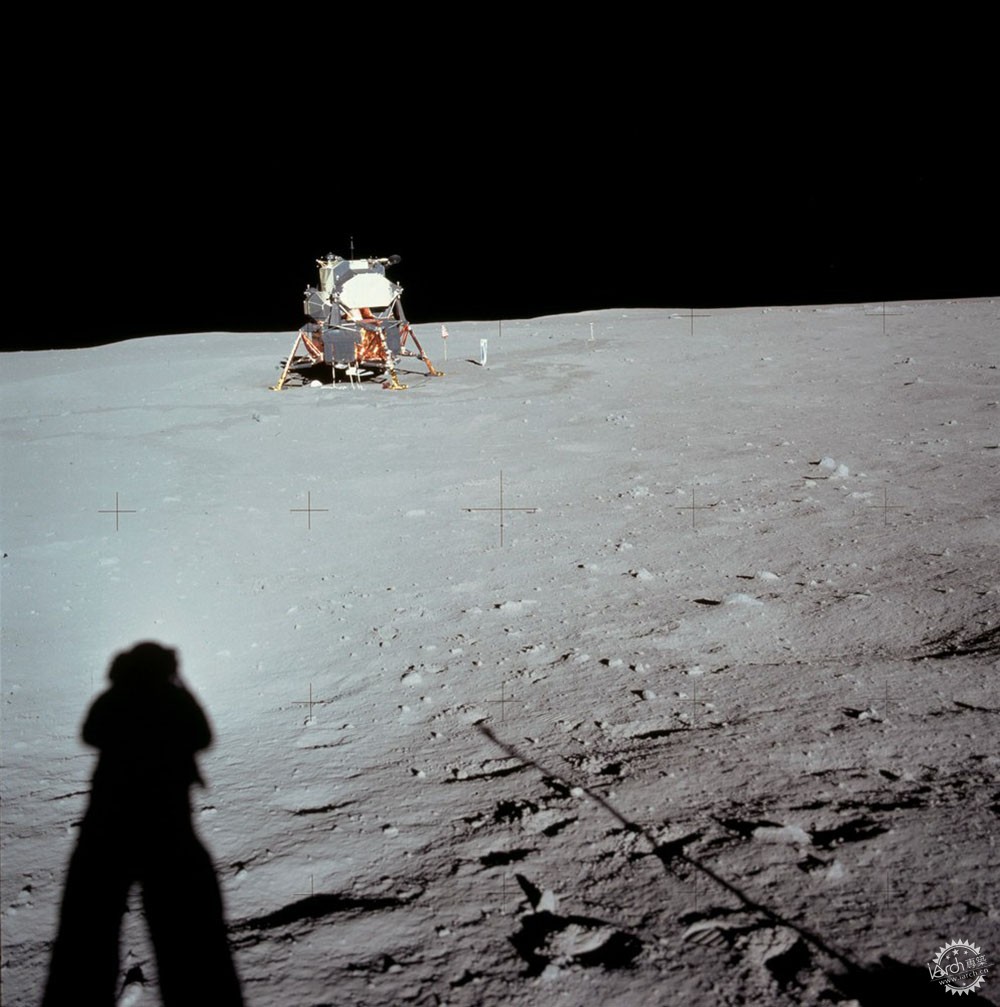
© NASA
艾未未,艺术家,柏林
信息来自《纽约时报》:月球无生命,因此在这里生存不太可能,这就如同一面镜子,它会让人们更加珍惜地球上的存活机会。因此,月球让我了解到,人类对于宇宙来说太过渺小,在这里我能够感受许多地球上感受不到的不同视角。
Ai Weiwei, Artist, Berlin
From The New York Times: “The intensity of lifelessness on the moon, the impossibility of species existing there, is a mirror. It makes us appreciate even more the precious miracle of life on this planet. So what I can put on the moon is an observation: My insignificance in relation to the universe, and to use that as a point of view for planet earth.”
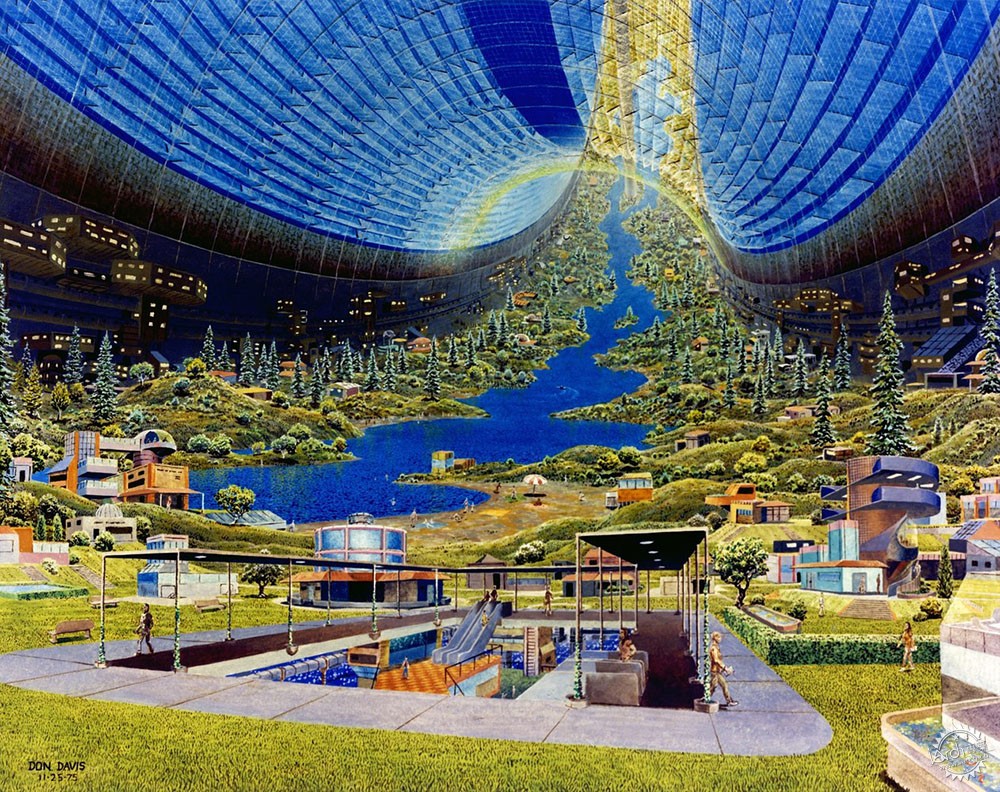
Courtesy of Donald Davis, NASA Ames Research Center
Kara Walker,艺术家,纽约
信息来自《纽约时报》:我构思了月球殖民地,多年来人们对这个话题谈论不休。因此我认为,地球上受到歧视的成年人可以来到月球生活。他们可以在25万英里的地方欣赏浩瀚宇宙,这个单纯的世界也许更加适合他们。
Kara Walker, Artist, New York
From The New York Times: “I got thinking about a moon colony, which plenty of people have talked about pretty seriously over the years. So what I’d do is this: For every female child born on Earth, one sexist, white supremacist adult male would be shipped to the moon. They could colonize it to their heart’s content, and look down from a distance of a quarter-million miles. It’s a monochrome world up there; probably they’d love it.”
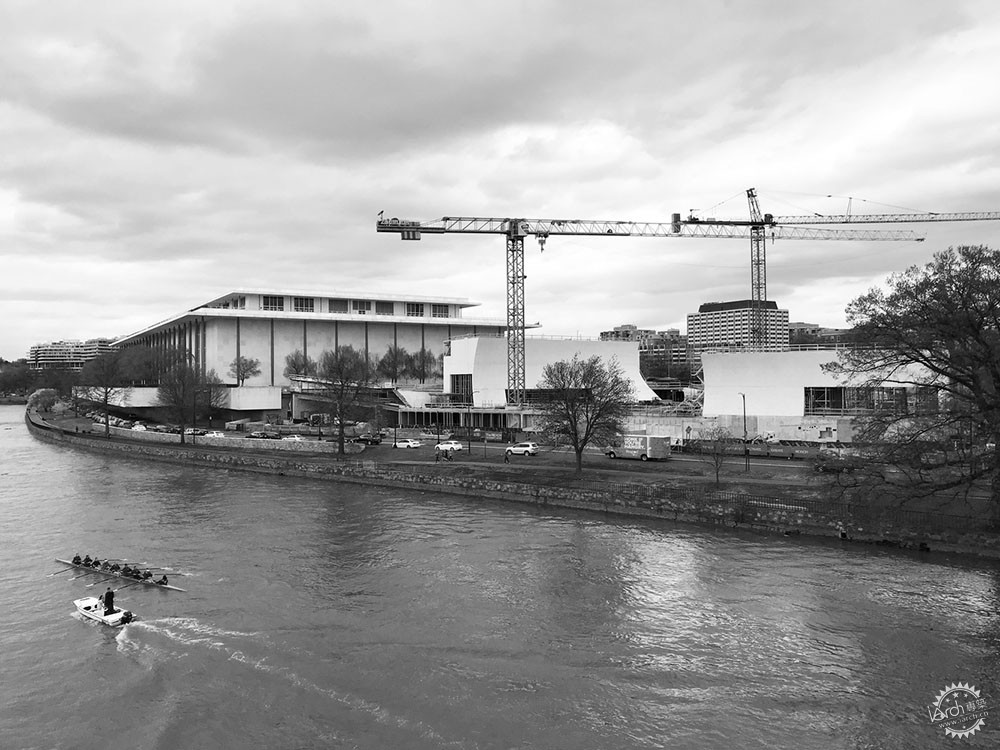
The Kennedy Center in Washington DC, currently undergoing renovations led by Steven Holl Architects. Image Courtesy of Steven Holl Architects
Laurie Anderson,音乐家与艺术家,纽约
信息来自《纽约时报》:去年,我在Kennedy中心庆祝John F. Kennedy的100周年庆典,我思考了他的许多关于太空项目的文章,他说了这样一句非常动人的话:“我期待无惧优雅美丽的美国。”这句话我始终记在心上,虽然这与现在的一些事实有所背离。
Laurie Anderson, Musician and Artist, New York
From The New York Times: “I played at the celebrations at the Kennedy Center for John F. Kennedy’s 100th anniversary last year, and I’ve thought a lot about his writings on the space program. He said the most beautiful things: “I look forward to an America that is not afraid of grace and beauty.” I keep that in my heart. It’s so antithetical to what’s going on now.”

The Factory of the Sun, German Pavilion for the 2015 Venice Art Biennale by Hito Steyerl. Image © Flickr user manybits
Hito Steyerl,艺术家与作家,柏林
信息来自《纽约时报》:我希望能够和其他7位艺术家一起,在太空建立空间栖息地。在地球上,有许多地方不适宜生活,例如战乱地区、极度贫困地区、环境恶劣地区,但我们希望能够有一些长满植物的场所,而我与其他艺术家能够共同设计这些场所,这里也将成为可以再利用的生活场所。
Hito Steyerl, Artist and Writer, Berlin
From The New York Times: “My idea would be to take the other seven artists and convince them not to blast off to the moon at all, but to create a space habitat right here on Earth. There are so many places that currently aren’t livable: conflict zones, areas that suffer from great poverty and environmental devastation […] We’d create an environment rich in oxygen, have plants grow, and the other artists and I could work and create. This is about recycling dysfunctional civilizations as livable habitats.”
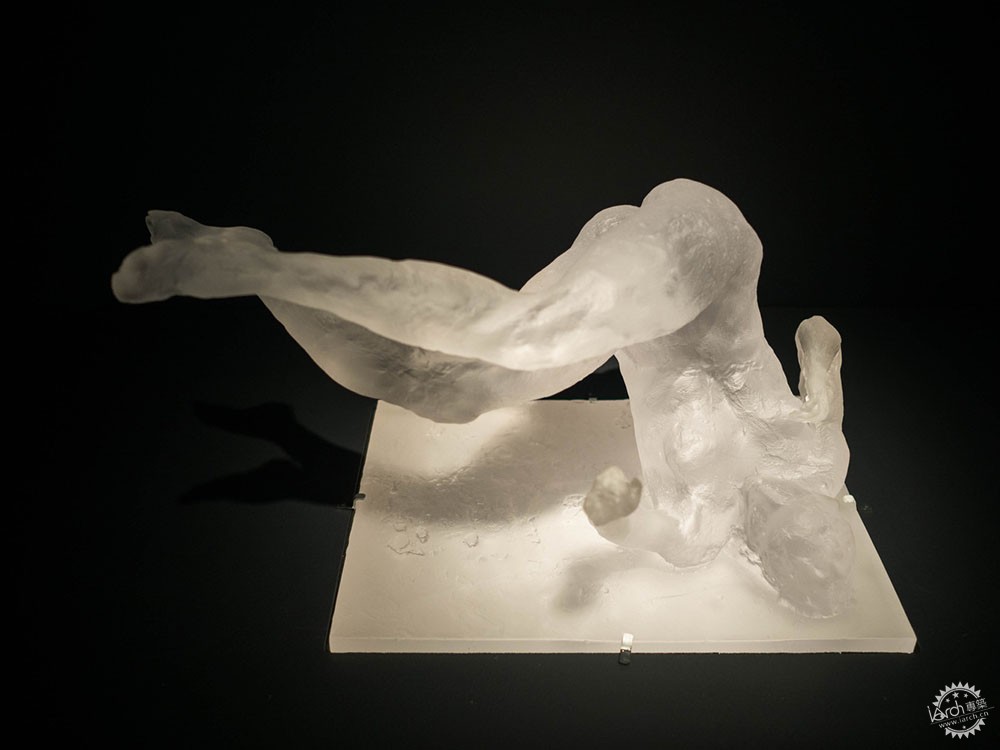
Tumbling Woman by Eric Fischl. Image © Flickr user mrulster
Eric Fischl,画家与雕塑家,纽约
信息来自《纽约时报》:我曾经认为来到太空是一件非常有趣的事,但是如果让我构思,我会希望人们能够脱下太空服,在无重力的空间里翱翔,这让标记领地都变成徒劳。
Eric Fischl, Painter and Sculptor, New York
From The New York Times: “The only way I could grasp the absurdity of having thought that I wanted to be there in the first place is to resort to humor. I think my first creative act after landing on the moon would be to unzip my spacesuit and pee into gravity-less space, in a futile effort to mark my territory.”
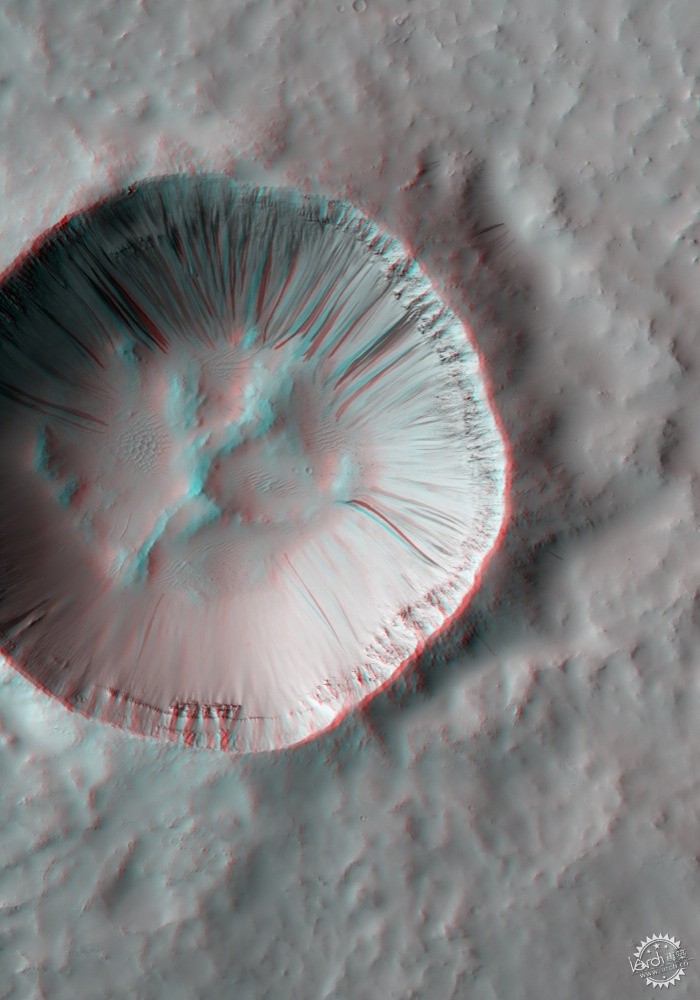
3D-ma.r.s.09,’ 2013 by Thomas Ruff. Image via Motherboard
Thomas Ruff,摄影师,杜塞尔多夫
信息来自《纽约时报》:对我而言,太空最有趣的是我们在地球所看不到的那一面,第一批宇航员在太空翱翔是一件让人紧张又兴奋的事情,因为直到在地球能看到的这一面重新出现之前,我们与宇航员都无法取得联系。因此我想拍摄这张照片来表达对月球的另一面在人们眼中再次出现的期待。
Thomas Ruff, Photographer, Düsseldorf
From The New York Times: “To me, the most interesting thing about the moon is the dark side: The side we never see from Earth. The first astronauts were nervous when they went around the moon, because you lose radio contact until you reappear around the other side. So I’d want to photograph that, and keep photographing as we came around and as the Earth rose again.”

Tacita Dean at Tate Modern. Image © Flickr user acwozhere
Tacita Dean,艺术家与电影制片人,洛杉矶
信息来自《纽约时报》:我喜欢收集石头,因此如果我来到月球上,其原始的表面会激发我的创作灵感,即月球上那些沉睡着的岩石。我想要制作一部关于月球生活的电影,并且主要关注表达其细节,我并不会过多地进行预设,但是我会尽量去学习。
新闻来源:纽约时报
Tacita Dean, Artist and Filmmaker, Los Angeles
From The New York Times: “I collect stones, so if I got to land on the moon rather than just orbit it, the surface would immediately excite me: the moon rock itself; all those meteorites, billions of years old. I’d want to make a film about the experience simply of being on the moon, concentrating on the detail of it, exactly what it was like. I wouldn’t try to pre-imagine the experience; I’d just observe. Absorb as much as I can.”
News via: The New York Times

© NASA
|
|
